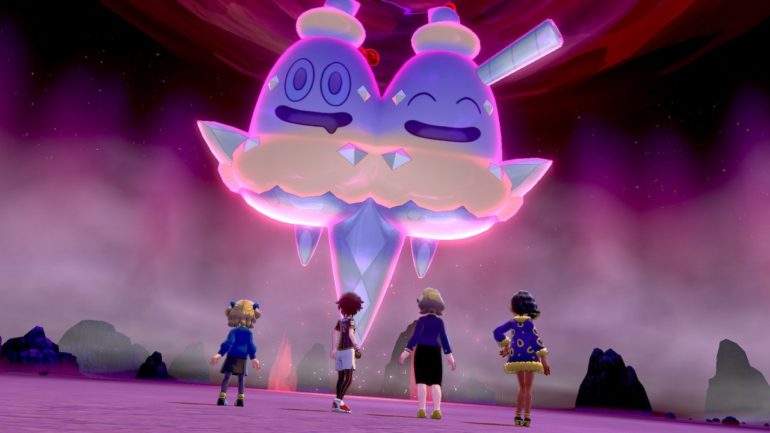Pokémon Sword and Shield Review: the new gameplay features
We take a look at the better aspects, like Max Raid Battles, and lament the shortcomings of others, particularly the Y-Comm system.
Thus far, we’ve covered the music and sound design, the graphics inside and outside of battles, and touched on the use of Kanto in Pokémon Sword and Shield. Here we review the new major aspects added to this generation of Pokémon games, from Max Raid Battles to PokéJobs.
Max Raid Battles
The idea of Raid Battles are not new to the Pokémon franchise. Indeed, the largely successful mobile title Pokémon GO introduced boss Pokémon that you take down with other people in a battle, and are rewarded with a chance to catch it afterwards. The online multiplayer of the main series games has prior been largely restricted to battles against each other, trading Pokémon, and sometimes a minigame here or there.
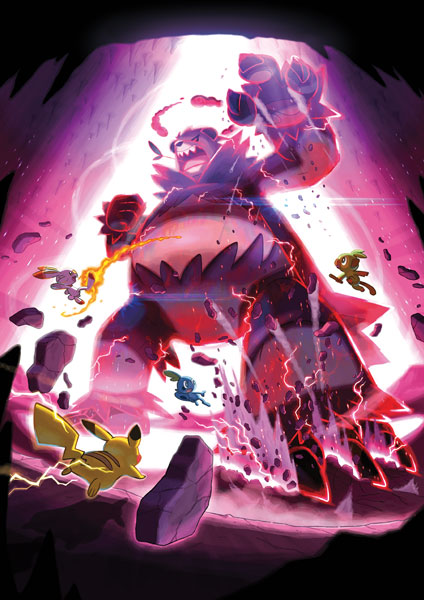
Max Raid Battles, then, offer an additional gameplay mode, that supports collaboration between players to take down a foe, and be rewarded in rare items and a chance at the Pokémon itself. It’s both a change in pace, and a welcome addition to postgame content. Unsurprisingly, Max Raid Battles were heavily advertised alongside the Dynamax and Gigantamax feature. As silly as making a Pokémon intimidating by just making it BIG may sound, it’s not out of the place of the franchise filled with silly puns, wild Pokédex entries, and fantastical creatures from animals to rocks to ice cream. And for the few cases of a Pokémon receiving a Gigantamax Form, it’s a good way to showcase it, not just from Gym Leader battles.
Importantly, Max Raid Battles are fun. It is satisfying to take down a boss, much like how Totem Bosses were a fun challenge to take down during Gym Battles. And unlike those boss Pokémon in the generation seven titles, you can take on Max Raid battles in the postgame, rather than only seeing them in Trials and a one-off story battle. You can host Raids for other people or hop onto a friend’s rare Max Raid Boss, and happily version exclusive Raid Bosses can still be shared.
Even if you fail to catch a Raid Boss, you can try again and still get various item rewards. It’s part of the range of improvements Game Freak have given to the competitive scene. Item rewards include a variety of single use TMs known as TRs, and Exp. Candies which greatly increase the speed of levelling up your Pokémon. As for the Raid Boss itself, if caught they often have high individual values (IVs) – or stats – that make them near battle-ready in many cases already, outside of a quick effort value (EV) training spree. Hidden Abilities can be found too. Preparing a competitive-ready team has never been so quick or so easy.
There is some polish needed for Max Raid Battles however. Finding an active Raid in your game can be tedious at times, with only one or two beacons active and needing to be beaten before you can access more. Hopping onto another person’s Raid can be even worse – but more on that later.
In the battles themselves, the shield mechanic can get tiresome quickly, and very predictable. (On that note, it is odd that the game text states the Max Raid Boss is getting more desperate and aggressive, only for it to put up a shield.) The breakpoints in HP can artificially slow down the battle, and there’s no way to go past the HP limit tied to the activation of a Shield. Rewarding other strategies, e.g. Brick Break having the ability to break an extra section of shield, would be one way to improve on the formula.
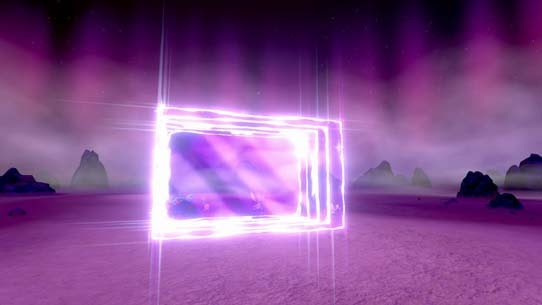
The NPCs that support you when you don’t have three other people to battle with are also an issue. You very quickly know all of them, and just as quickly learn to hate specific ones that tend to waste time using support moves (that will be made null and void later on by the Raid Boss anyway). In the case of a certain Featherdance Hawlucha, it will have no effect at all on a Max Raid Boss with a shield. The lack of updates seen so far to their rosters, and inability to improve the partners you get, is a missed opportunity. If the teams got better as you progressed in the story, or if you spent Watts to improve them, it would give players an incentive to work at this aspect, and feel rewarded for their effort.
It’s been covered in our Pokémon Sword and Shield graphics in battles review, but slow animations in Max Raid Battles do make them drag on for too long. The whole process could be streamlined without showing repeated animations every single turn, and there is no need for a turn-based game to feel this slow either. Sometimes even glitched animations have been spotted in Max Raid Boss battles.
Pokémon Camp and Curry
The Pokémon Camp feature is the latest in the Pokémon interaction side content, introduced since the Pokémon X and Y titles in Pokémon Amie, and built upon in Pokémon Sun and Moon in Pokémon Refresh. On the surface, it’s a cute addition, and builds on a neat concept of camping with your Pokémon during your adventure, much like seen in many episodes of the Pokémon anime. We’ve seen several cute animations added, that give Pokémon much needed personality, and it’s been a popular aspect showcased on social media. We even have a cooking minigame back.
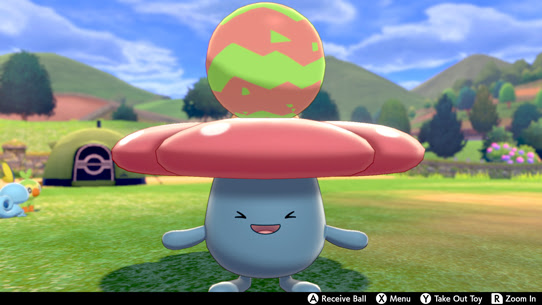
Yet, when you compare it to previous games, it is a step back from Pokémon Amie and Pokémon Refresh. There you had more interactivity. You could pet your Pokémon, for starters – this seemingly simple concept is missing in Pokémon Camp. Even with Game Freak’s somewhat odd lack of touch screen support for the Nintendo Switch in Pokémon Sword and Shield (this wasn’t the case with Pokémon Let’s Go, Pikachu and Eevee for its petting feature), this could be done with the two control sticks, or just made a handheld-only mechanic. There have been animations and an implementation for petting Pokémon in three separate games prior to Pokémon Sword and Shield already, meaning they would only need to add it in for the new generation eight Pokémon. This makes this sort of omission baffling.
There are no other minigames, like the three we saw offered in Pokémon Amie. Maybe none of them were great, but it at least offered variety, and an additional way to bond with your Pokémon. Chatting with your party members, throwing a ball, or having them attack a toy is all you can do with them. You cannot notice your Pokémon wake up, or taunt it with food, or brush its fur. And while interactions with other Pokémon are a plus that Camp has brought us, these start to feel limited soon enough too. We need to see more.
Curry cooking ultimately also fell flat, with little variety in the actions needed. You choose the ingredients and they could lead to some entertaining looking dishes at times, but ultimately you just throw in the food, fan the fire, stir the pot, and time a simple quick-action event. There’s little incentive to go through the repetitiveness to finish the Curry Dex.
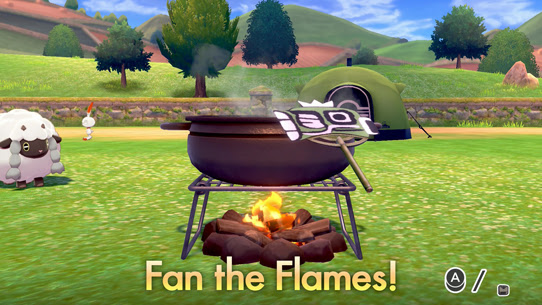
Poké Jobs
Like Camp, Poké Jobs is a newer version of a previous generation feature, Pokémon Pelago. Compared to Pelago, Poké Jobs is forgettable and a step back. The idea in itself is decent – sending your Pokémon stuck in boxes off to jobs is a neat way to extend your experiences with Pokémon outside of your active party. There is something nice about the cutesy background graphics (repurposed from the rather short-lived Pokémon Quest game). But there’s just less variety here.
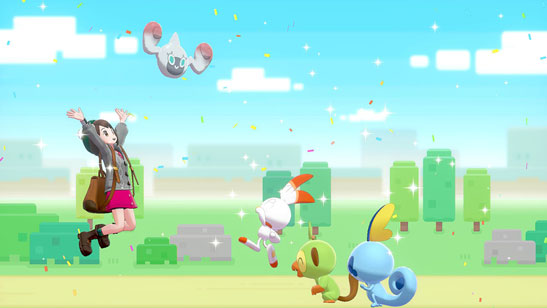
Pokémon Jobs basically has you selecting Pokémon of a certain type to go on an adventure, and they come back with money, experience, and a random item. Some jobs allow you to do EV training instead. The one item is a bit lame considering at times you are sending out a box worth of Pokémon on a Poké Job. Experience points are always neat, but it falls short when you can level up a specific Pokémon easily with Exp. Candy. This is more of a testament to the improvements made in levelling and training your Pokémon this generation than a failing of Poké Jobs, however.
Pelago though just had more character to it. You could see your Pokémon on the islands whenever you want, and interact with them. On top of gaining items, EVs, and experience points, you could grow berries (a feature very much absent in Pokémon Sword and Shield) and farm beans which could be used for increasing affection. Each aspect was separate, rather than rolled into a vague job that your Pokémon did off-screen for several hours. Each Poké Job meanwhile ultimately had no difference to each other besides a couple lines of flavour text describing the job and their recommended Pokémon. Pokémon Pelago even had an NPC to chat with, and a sense of progression in upgrading your islands via the beans you earnt. In Poké Jobs, while you did gain access to higher ranking Poké Jobs as you used the feature more, it wasn’t really something you worked on and allocated resources to improving, it just… happened.
Poké Jobs ultimately seems like a decent base that ran out of time in development. But we’ve said that before about the graphics too. Speaking of rushed…
Y-Comm
Now this may be the biggest disappointment. While Poké Jobs is a bonus feature you can easily ignore, the Y-Comm is fundamental to interacting with the online features, including Max Raid Battles.
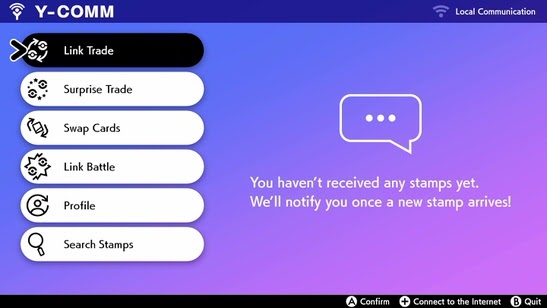
In short, it is bad. The system is not intuitive to use – there should not be a need to include an explanation on how to use it in a guide about Raiding. There is no easy access to friends – if you want to trade with an online friend, you’ll still need to input an individual code and hope someone else didn’t jump onto that. The Stamp system is somewhat clunky, and worse yet refreshes infrequently. You can wait several minutes before it refreshes again, and while you can try to force it by disconnecting and reconnecting, this should never be a solution. Worse yet, the system will not account for Max Raids that are no longer available – they remain on the list. And then sometimes the system just lags or fails to connect properly.
What makes it all the more frustrating is that we’ve seen other games on the Nintendo Switch handle online in a much better way, even despite complaints one might have about the Switch Online Service. I have never encountered this many issues with any other title.
Adding to that, we know that Game Freak has done online well before. Many said that the Festival Plaza was a big step back from the fantastic Player Search System (PSS) from the generation six games. It appears that the Y-Comm is a taxi ride further back than that, undertaken by a dodgy driver. It has more issues, lacks features (such as the Global Trade System – or GTS – which is locked behind Pokémon HOME now), and yet has a more powerful system supporting it.
Perhaps the Expansion Pass will come with a free set of updates that will polish this aspect of the game. As it stands though, it is a major failing of the game.
Overall, it is a mixed bag. While Max Raid Battles are the clear winner and still fun to do, lacking just a bit more care and polish in their implementation, Pokémon Camp and Pokémon Jobs are ultimately lacking in realised potential, while Game Freak needs a step back and review how they handle the online aspect of their game.
Thanks again to Nintendo Australia for supplying a review copy of the game.
Edited by Mercury and ranko.
